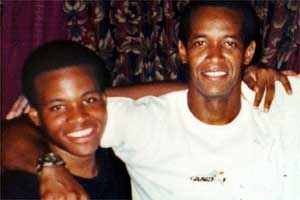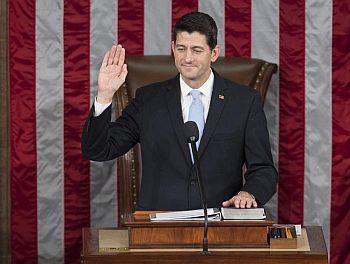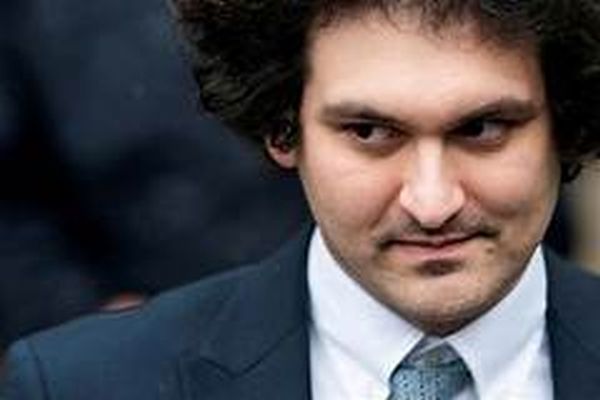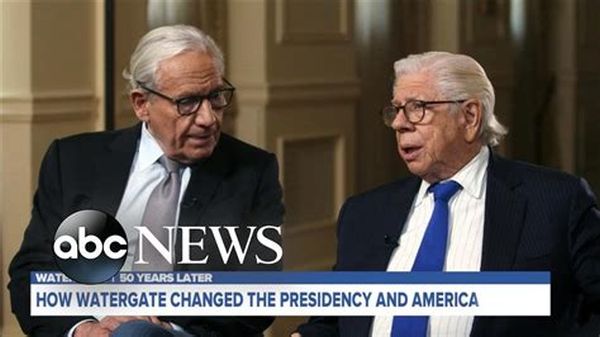Shooting for Literary Immortality
From The New CriterionAlthough, to judge by what one reads, real levels of literacy continue to decline in America, there is one sense in which we may be said to be a hyperliterate culture. This is in the challenge taken up by an apparently ever-increasing number of self-consciously artful prose stylists to make historical events their own by (as we may say) writing them up, and turning them into literature. One of the most striking recent examples is to be found in Martin Amis’s book, published last summer, called Koba the Dread: Laughter and the 20 Million. For some reason, though he had nothing new to tell us about them, Martin Amis thought that the crimes of Josef Stalin had been insufficiently commemorated by the “several yards of books” that he had read on the subject and so set out to convert the gruesome tale into a Martin Amis-style postmodern novel.
Hence the subtitle, which leads us to a number of ineffably silly and offensive reflections — which do not come near to exhausting the silliness and offensiveness of the book — on why the 20 million victims (putting the total rather low) of Uncle Joe may be regarded as fit subject of mirth while the victims of the Holocaust may not. The less said about this book the better, but it is, I take it, a symptom of a trend. It may have been started by Truman Capote with In Cold Blood, and Norman Mailer may have been its most prominent practitioner since, but the cacoethes scribendi seems to have spread from eminent novelists to just novelists to, well, would-be novelists currently employed by our finer newspapers or periodicals.
The terror attacks of September 11, 2001, for example, have already produced at least one book of deep thoughts and delicately crafted essays by what Publishers Weekly calls “a lineup of literary names,” and we can expect a similar treatment of the wars in Afghanistan and (if it happens) Iraq. Obviously, it doesn’t take a war or 20 million dead by a tyrant’s hand to call forth the talents and best efforts of our most accomplished stylists and cultivators of extravagant metaphors and analogies. Only a dozen or so of corpses will do the trick, or so it seems from the journalistic treatment meted out to “the D.C. sniper” — as he was known before the arrest of John Muhammad and John Lee Malvo revealed him to be a man and a boy.
Here, for instance, is Richard Lambert in The Times of London. “For people living in the suburbs of Washington DC, the sniper has become a terrifying reality. . .But for the rest of the nation, there is something surreal about the whole story. This is partly because of the nature of the crimes, the only motive of which appears to be to create the maximum amount of confusion and terror. . . Above all, the unreality of what has been happening comes from when and where these crimes are being committed. Just a few minutes away by helicopter flight from the terrorised suburbs, President Bush and his Administration are working on plans to send tens of thousands of young Americans to invade a distant country that most people would be hard pressed to identify on a map. That grim reality is hard to grapple with, too.”
The novelist Patricia Cornwell wrote in the New York Times that “One of the many threadbare jokes I used to hear, going back to my earliest days of running around with cops, was that a shooting victim ‘died of lead poisoning.’ I used to roll my eyes at the stupid joke. But I’m not now. For the first time in my life, I realize it is possible for a people to be poisoned by a single round. One shot, two shots, eleven shots fired by someone with an AK-47 or some other high-powered rifle with a scope rips the life from another of our neighbors and sends the rest of us indoors. . .Terrorism. Lead poisoning. We watch the stock market implode. Fear creates fear, and the more we fear, the more we create fear until the day will come — and it most certainly will — when we won’t need anyone to ruin our lives. We will become perfectly capable of ruining them ourselves.”
A grim prospect, I think you’ll agree, yet perhaps not so grim as that adumbrated by David Gelernter in the Wall Street Journal: “How do you prevent crimes like the D.C. murders? I don’t know; but I do know that John Donne claimed in 1624 that no man is an island. And at the time that was no mere theological assertion, it was a fact; but sometime during the 20th century, it stopped being true. In modern America (and for the last half century at least), many men are islands. The vast majority are harmless; no doubt nearly all are unhappy; a few are potential mass murderers. Citizen murderers of the D.C.-sniper type are drawn from the (in Donne’s sense) island population. . .”
Along with the elegiac note, along with the extravagant comparison and the telling paradox, there is commonly included a bit of profound social criticism, just so that we may be sure of getting our money’s worth. Thus Tom Shales in the Washington Post: “What’s shocking is what no longer shocks us. We wake up in the morning now fully expecting to hear of a new tragedy, another heartless and seemingly random killing by a serial sniper terrorizing the Washington area. It is becoming a cruel, grim routine. We may actually, and appallingly, be getting used to it. We’re adapting to a new world of fear that began on Sept. 11, 2001.”
“One approaches the TV set timidly, with justifiable apprehension and dread,” Shales continues, though his colleague Paul Farhi suggests that the reason may be the relentlessly portentous tone of the TV coverage itself:
It’s not just a harrowing, mystifying news story affecting the lives of millions. For the TV networks and stations covering the sniper case, it’s also a splendid opportunity to promote the stations and their coverage.
“A sniper on the loose, a nation on edge,’ says a gravelly CNN voice over video of anchor Wolf Blitzer and other network stars. “Count on CNN to bring you the whole story. Now, more than ever!”
“Few clues in a community gripped by fear,” trumpets rival Fox News Channel, the network’s logo prominent on the screen. “What’s next in the sniper case?”
It would of course be unfair and irresponsible to suggest that the media hype actually flattered the snipers into extending their reign of terror, but there could be little doubt that, as the FBI profiler Clint Van Zandt said, “He’s playing off the media. He’s listening to every law enforcement briefing. For a while they were coming every two hours. That was a tremendously rich source of information. In a perfect world we would put a media cap on this and we would starve him of information.” It seems to go without saying that a world in which even so small a degree of media restraint as this were possible could only be a “perfect” one. But Van Zandt himself had experienced the blowback from the media coverage when, after he had accused the sniper of “playing God,” the police found the Tarot card with the message: “Mr Policeman, I am God.” Van Zandt told Tim Russert: “We are dealing with an interactive terrorist.”
But it was doubtless the way in which we are all equal before the media god, and are all eager to take up our assigned roles in its long-running psychodrama, that led to the best postmodern effects. Of these what had to be the ne plus ultra came when the one of the killers, still at large, angrily accused the police of “incompetence” for putting him on hold or hanging up on him when he called their tip-line. Neither the criminals nor the police appear to have doubted throughout the weeks of fear that it was the primary job of the investigation to listen to these madmen and to submit, where appropriate, the evidences of their madness to the media for analysis. Only then might they be content to be caught. Where the police were slow about doing this, the media and the snipers were quick to unite in protest.
Being afraid was of course the public’s part in the show, and the public seemed to play it with a will, at least if the faithfulness of the media in reporting their fear back to them was anything to go by. Fear also gave the media’s would-be belletrists the chance to show off their creativity in the quality papers. A report published on the day the killers were caught said that 50 per cent of respondents to a Washington Post poll confessed to being “very” or “somewhat” frightened of being sniped. This was a significant datum and a news item in itself both because it confirmed that fear was a fitting and appropriate response to the media climate and because it justified the media’s reporting of that fear when the appropriate response was made. Only nineteen per cent claimed not to be frightened at all.
Didn’t these people watch TV? Didn’t they know what was expected of them?
By the way, broken down by sex, the results of the poll also showed that 60 per cent of women were very or somewhat frightened but that only 40 per cent of men were. Though women were more likely to have wept over the shootings, both sexes were equally likely (75 per cent) to have experienced the emotion of anger. Does this surprise you? Do you feel shocked that ours is still enough of an honor culture that many men feel ashamed to admit to being afraid but few women do? But the Washington Post, which sees everything happening on earth from the distant planet of its own multiracial, multicultural, unisex utopia — talk about a perfect world! — made no mention of these familiar facts. It did, however give us one of the great postmodern moments of the affair when it responded to the first sniper attacks with the headline: “5 Shooting Victims Reflect Montgomery [County]’s Growing Diversity.” Than this it is almost impossible to imagine anything going further in the direction of self-parody.
Yet there was a similar moment in the coverage of the affair by the New York Times, which at one point thought it newsworthy to report that, although there was (of course) “no overstating how much this killer or killers has changed their lives. . .for many people, resentment is more focused on the wily sniper than the police who cannot seem to stop him.” Just fancy that! People resenting a criminal murderer more than they do the presumptively incompetent officialdom that the sages and philosophers of the New York Times have made it their life’s work to second-guess. Some people just don’t get it.
At the same time, the attention of the media is enough to dignify even the police, when they are its recipients. Later in the same article the authors, Jeffrey Gettleman and William K. Rashbaum, note that “Police officials in other areas understand the stress. They know what it is like to be at the red-hot center of a 24 hour news culture, with anxiety building by the day. ‘The pressure is enormous, enormous from every point,’ said Edward Zigo, a retired New York police detective who helped arrest David Berkowitz in the Son of Sam killings in 1977. ‘Everybody is on your back. . . I can just imagine what they’re going through.’”
Most of us were still working on imagining what the sniper’s victims were going through, but allowances must be made, I suppose, for the media’s unquenchable appetite for drama, especially the drama of those caught in their spotlight while going about the business of being incompetent. For the same reason, their careful cultivation of fear meant that few if any commentators were so hardy as to suggest to worried parents and spouses and children that it was absurd of them to cancel school sports and other public events because of the possibility of being shot, or to take police advice to walk in a zig-zag pattern if it were necessary to show themselves in public at all. That people were prepared to take risks might have made for more excitement, but the media always assume that the acceptable level of risk is zero.
This became evident during the time of the media’s brief attempt, cut short only because arrests were made only a day or two later, to create a scandal out of the police’s withholding the warning, purporting to come from the snipers, that children were not safe “any place, any time” — as if anyone but a fool ever supposed that complete safety were an option for children — or anyone else — sniper or no sniper. But the essence of the story, from the media point of view, was the scope it gave for exaggeration of the public’s fear. This was not a conscious effort of hype so much as it was a structural element in the media constitution, if we can put it that way. They always start from a baseline of 100 per cent security and, presumably, living forever, in order that the tiniest uptick in the statistical risk, whether from cancer, heart disease, anthrax, smallpox, bubonic plague (doctors in New York are said to be treating a case as I write) or terrorism, can register with customers whose patronage may be supposed to depend on their keenness to be apprised of their risk profile from day to day.
No sooner had the suspects been arrested in the sniper case than another example of this structural tendency turned up in the form of the Hart-Rudman task force on homeland security of the Council on Foreign Relations, which produced an alarming report on all the ways in which incompetent officialdom, insufficiently resented by those who lived in fear of the sniper, was also preparing to fail to forestall the next terrorist attack — which the commission, headed by former senators Gary Hart and Warren Rudman, confidently promised would take place. Indeed, they had already predicted an attack on the American homeland seven months before the airplanes flew into the World Trade Center and the Pentagon and were inclined to accept kudos for their “prescience,” even though they had predicted neither the date nor the time nor the place nor the persons involved nor the method. Apart from those details, they had the thing nailed.
They were also not averse to suggesting that if only their voice had been heeded 3000 Americans needn’t have died on September 11th, nor who knows how many more in the next attack — about the myriad of possibilities for which they eagerly supplied some of the details missing from their earlier forecast. In the real world, too many warnings are quite as bad as too few. You can’t take every precaution. But in the media world, which is also the world of the Council on Foreign Relations’ task force, all that matters is being able to point, after the fact, to some more or less ambiguous warning that went unheeded. The commissioners, as much as the media, had a vested interest in stirring up fear. If they were really motivated solely by concern for national security, they would have made their report private and, indeed, secret, since publicizing it could be of benefit only to the terrorists.
The problem is that we are at war, and in war the attitude that security is all-important is a recipe for defeat. As in the case of airport security — or the California jury that awarded a dying smoker $28 billion on the assumption that the tobacco company, by offering a product with a well-known risk attached to it, was guilty of causing her illness — we were again in danger of adopting the media’s impossible standard of 100 per cent security. As a result we lose focus on the real bad guys and instead seek for causes of recrimination among ourselves for any conceivable mistake or lapse that, had it not happened, might have caught the terrorist and prevented him from committing his act of terrorism. Terrorism is called so not because it kills people but because all the people it doesn’t kill are expected to panic at the thought that they may be next. This suggests that the only way to defeat terrorism is by a manly refusal to change any habits, or to admit to fear because some pathetic nonentity like John Allen Muhammad, or Mohamed Atta, wants us to as part of a media-aided demonstration to himself that he is not a pathetic nonentity. Of course, only in a perfect world would the press to leave off its endless emotion-mongering and join in this noble resistance.
Discover more from James Bowman
Subscribe to get the latest posts to your email.







